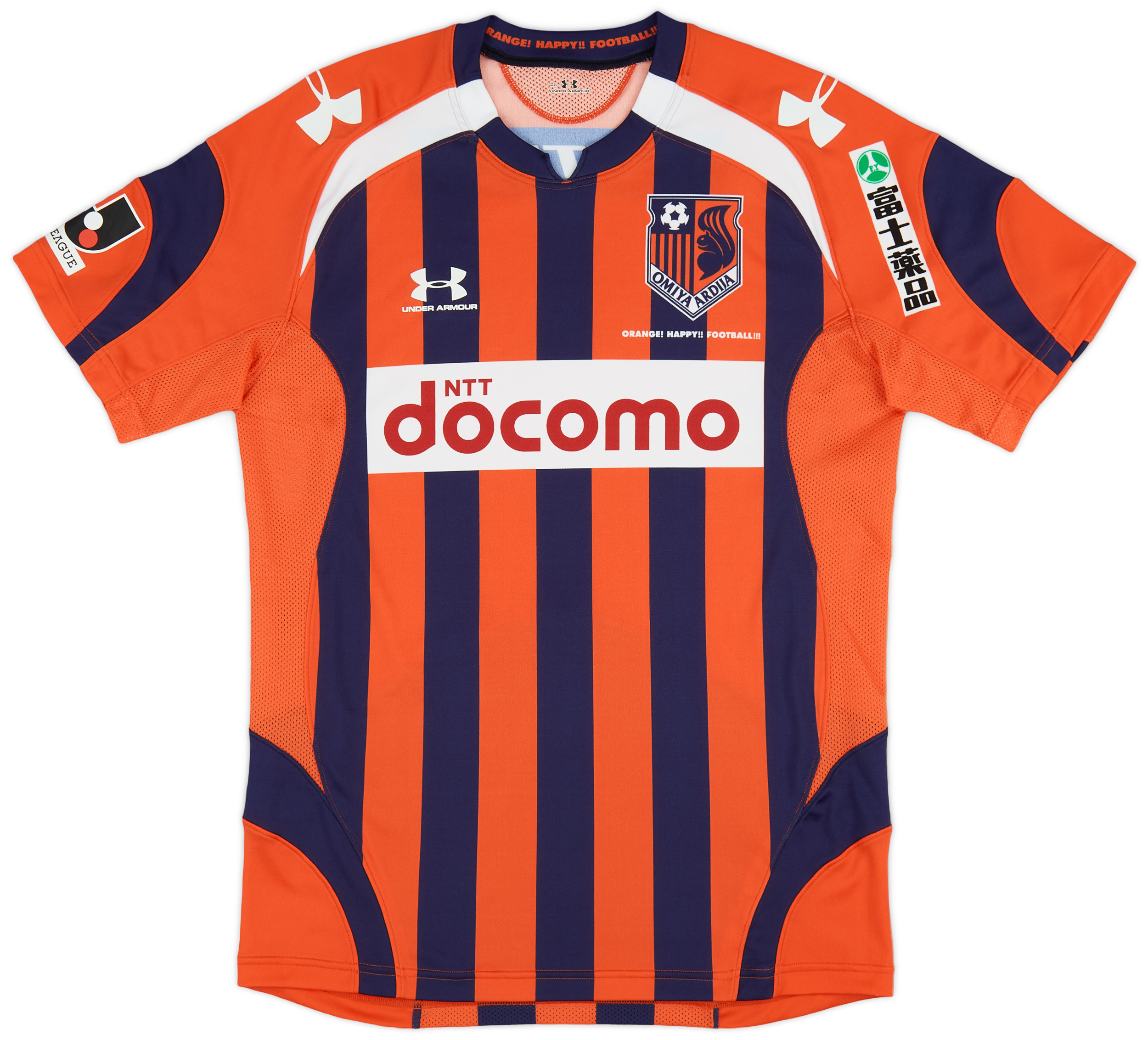Omiya Ardija
Introduction Omiya Ardija is a professional football club based in Saitama Prefecture, Japan, known for representing the vibrant community of Omiya. Founded in 1951, the club has grown from humble beginnings into a respected name within Japanese football. Its distinct orange and black colors symbolize the team’s identity, while its dedicated fanbase, dubbed the “Ardija […]
2004-06 Omiya Ardija Away L/S Shirt - 6/10 - (L)
94.99£ - ca: €112
2009-10 Omiya Ardija Home Shirt - 8/10 - (M)
94.99£ - ca: €112
2017-18 Omiya Ardija Home Shirt - 9/10 - (XL)
70.99£ - ca: €84
Introduction
Omiya Ardija is a professional football club based in Saitama Prefecture, Japan, known for representing the vibrant community of Omiya. Founded in 1951, the club has grown from humble beginnings into a respected name within Japanese football. Its distinct orange and black colors symbolize the team’s identity, while its dedicated fanbase, dubbed the “Ardija Family,” adds to the electric atmosphere of home matches at NACK5 Stadium, known for its passionate support.
Club History
Omiya Ardija was originally established as Omiya Football Club in 1951, participating in amateur leagues until it turned professional. In 1999, Omiya was promoted to the J. League Division 2 and soon transitioned to J. League Division 1 following a successful season in 2000. Throughout the early years of the 21st century, the club’s performance fluctuated, facing relegation and promotion battles that defined its identity. Key moments in its history include the club’s first J. League match on March 4, 2000, and the substantial financial investments that came with the club’s rise.
Achievements
Omiya Ardija’s achievements are impressive, particularly for a club that has experienced the turbulent ups and downs typical of many football teams. The pinnacle of its success came in 2001 when the team finished second in the J. League Division 1, their highest league finish to date. Additional accomplishments include winning the 2010 J. League Cup, securing their first major trophy and marking a significant milestone in the club’s history. They have also consistently competed in the J. League and have made notable contributions to Japanese football, particularly in developing local talent.
Significant Players and Matches
Over the years, several significant players have donned the iconic orange and black jersey. Among them, Yuki Otsu, who played for the club from 2009 to 2012, garnered attention for his skill and agility on the pitch. His contribution to the team during this period was crucial, helping the club maintain competitiveness in the league. Another notable figure is Sho Yoshida, who rose through the ranks to represent the club before making a name for himself in Europe. Landmark matches, such as the thrilling 2014 confrontation against FC Tokyo that ended in a 3-0 victory for Ardija, showcased the club’s potential and flair on the field, solidifying its reputation in contemporary Japanese football.
Cultural Impact
Omiya Ardija has forged a strong connection with the local community, significantly impacting the culture of Saitama Prefecture. The club engages in numerous outreach programs, fostering youth development and promoting healthy lifestyles. Matchdays are vibrant affairs, attracting a diverse fanbase that creates an electrifying atmosphere at NACK5 Stadium. The team’s mascot, Ardija, helps to bridge the gap between the club and its younger supporters, making football accessible and enjoyable for families. Such initiatives have helped embed Omiya Ardija into the cultural fabric of the community, ensuring not just a loyal fanbase, but a generation of future players and supporters.
Conclusion
Omiya Ardija, with its rich history and passionate support, occupies a unique place in Japanese football. From its foundation to notable achievements and the profound connection with its local community, the club represents more than just a team—it’s a symbol of unity and pride for Saitama. While Omiya continues to strive for greatness on the pitch, its commitment to its fans and the development of football culture in the region speaks volumes about its importance in the landscape of the sport. As the club continues to evolve, its legacy will undoubtedly inspire future generations of footballers and fans alike.


